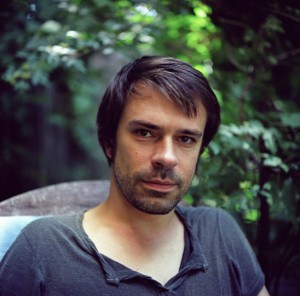oO
1 June-15 September 2013
Opening: 30 May 2013, 17h
Palasport “Giobatta Gianquinto”
Palasport Arsenale
Calle San Biagio 2132
Castello – Venezia
Curator: Raimundas Malasauskas
Commissioners: Aurimė Aleksandravičiūtė & Jonas Žakaitis
Production Manager: Francesca Bertolotti
Assistant: Justė Jonutytė
Graphic Designer: Goda Budvytytė
Artists: Liudvikas Buklys, Gintaras Didžiapetris, Jason Dodge, Lia Haraki, Maria Hassabi, Phanos Kyriacou, Myriam Lefkowitz, Gabriel Lester, Elena Narbutaitė, Morten Norbye Halvorsen, Algirdas Šeškus, Dexter Sinister, Constantinos Taliotis, Kazys Varnelis, Natalie Yiaxi, and Vytautė Žilinskaitė.
circa 1972
Perhaps a secret urge to blossom brings the cactus in Vytautė Žilinskaitė’s tale close to a ball lightning. The latter emerges to Darius Mikšys around the same time in his kitchen. No one is injured; there are no survivors either.
1973
Foundations of the Palasport Arsenale, designed by Enrichetto Capuzzo, are laid in Venice.
1977
Completed Palasport Arsenale is named after Giobatta Gianquinto, a native Venetian, a criminal lawyer, member of Italian Communist Party and mayor of Venice from 1946 to 1951.
The perimeter of the Palasport site is extruded upwards by a windowless, in-situ, cast concrete wall-a modernist architectural gesture towards its historic context. The seemingly cold concrete building is actively used by the local community.
(“You know what, guyth? Letth play. Letth let that thneaky little goat chathe uth thith time!”)
1983
Algirdas Šeškus, then an active photographer, takes a series of shots of gymnastic exercises performed on the morning program of the Soviet Lithuanian TV. “I am not certain whether it was morning or evening then,” he admits today.
11 MARCH 1991
The Republic of Lithuania proclaims its independence and several years later applies for EU membership.
mid ’90s
Algirdas Šeškus drops the ‘work’ from the ‘art work’; and concentrates on his bioenergetics healing practice.
2007-2008
Kazys Varnelis, an explorer of the infinite optical universe, paints The Last Shot, his conscious decision to quit painting.
29 OCTOBER 2010
Kazys Varnelis dies.
22-23 SEPTEMBER 2011
A dream containing several elements of oO appears to Antanas Gerlikas (“I met Gintaras Didžiapetris in a vast red brick building with a mirror-like perspective. [.]”).
8 NOVEMBER 2012
Raimundas Malašauskas lands in Nicosia to test the premises of two national pavilions as one exhibition called oO. Stelios Votsis, one of the most revered and groundbreaking artists in Cyprus, dies the next morning.
DECEMBER 2012
Gabriel Lester conceives oO‘s display architecture, which is to be constructed from modular walls shipped to Venice from a number of museums in Europe. Elena Narbutaitė later names the architecture Cousins.
4 DECEMBER 2012
Krõõt Juurak changes her name to KroOt-her name becomes a venue to be rented out to other artists.
1 MARCH 2013
Enrichetto Capuzzo, the architect of Palasport Arsenale, dies.
MARCH 2013
European Central Bank proposes Cyprus to impose a levy on its bank deposits. An unprecedented case in European financial history. Oo shakes down to its core-one of the two countries is on the brink of collapse.
5 APRIL 2013
An agreement to merge the Lithuanian and Cypriot pavilions with the sports activities of the Venetian schools at Palasport Arsenale is reached.
30 MAY 2013
An exhibition called oO (or Oo) opens at Palasport Arsenale in Venice. Three tales from the ’70s by Vytautė Žilinskaitė are released in two languages as an exhibition catalogue.
Dexter Sinister launches ‘a work that is not there yet’ as a part of an oO sequencer tied to the future.
16 JUNE 2013
A festival of calisthenics takes place at the Palasport Arsenale. 120 girls (ages 4-12) perform in the scenography of Cousins. Daily activities of basketball, football and other sports play out in the company of the exhibition.
27 JUNE 2013
“Two postmen are missing, it’s chaos” fires the June 27th issue of Il Gazzettino on the table of the cafe (precise location to be announced) in Venice.
Photo: Raimundas Malasauskas.


